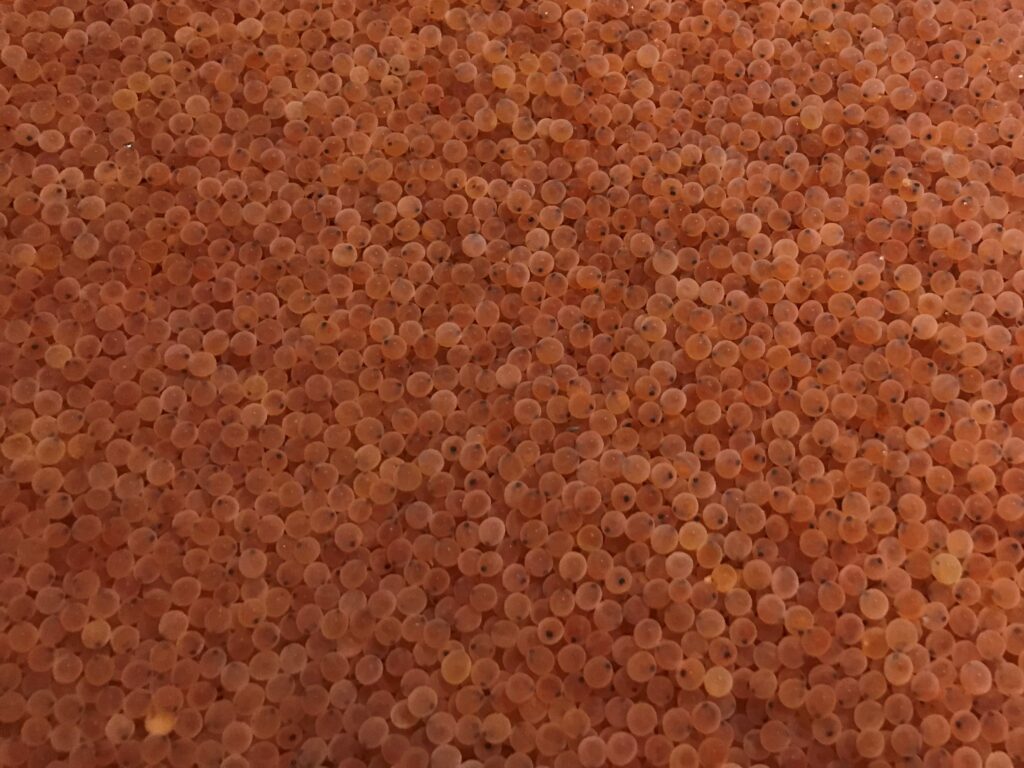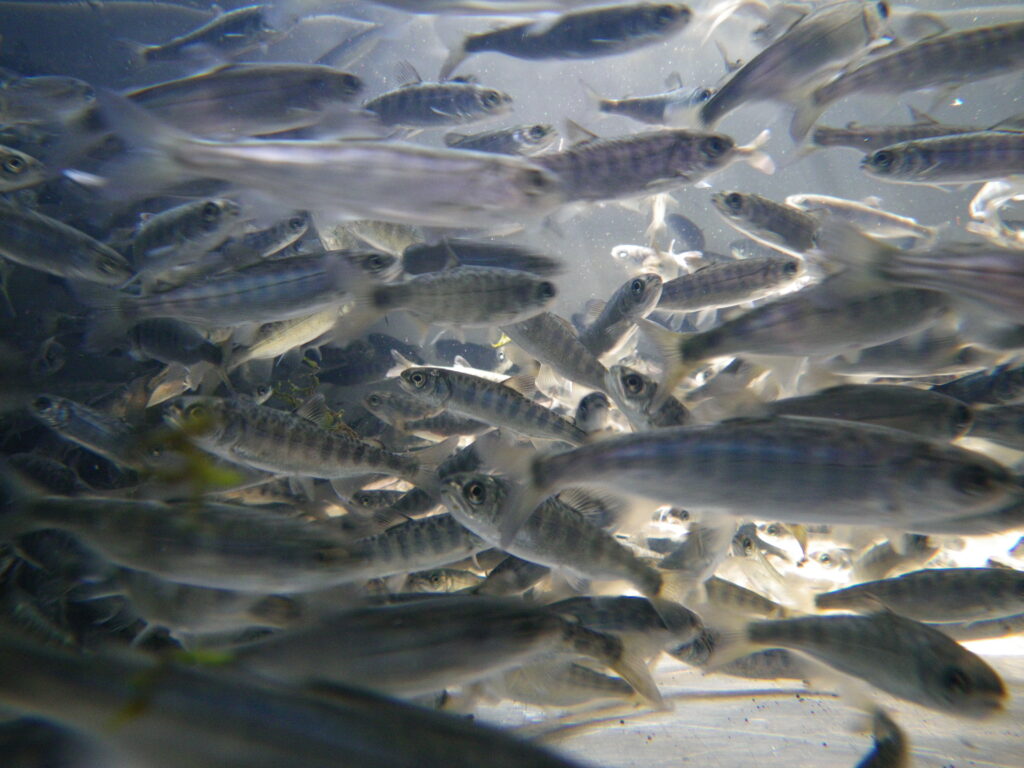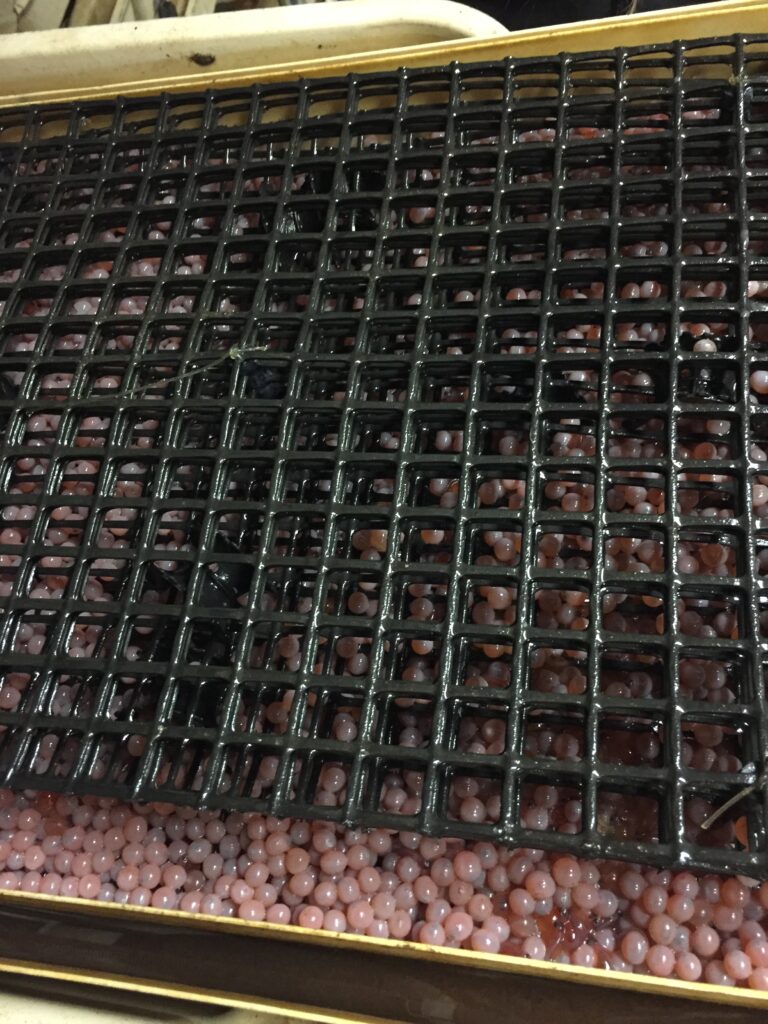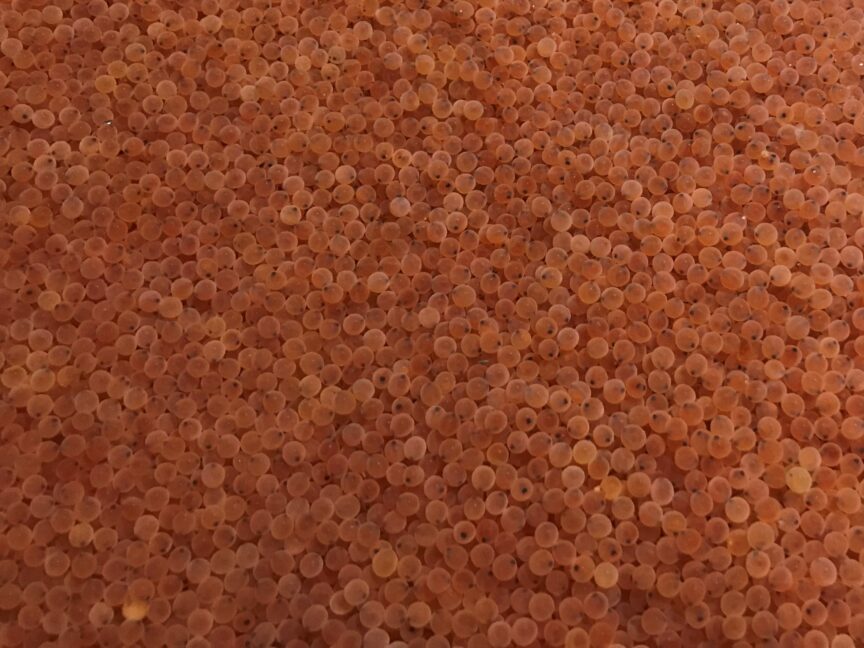
A new study sheds light on the alarming mechanisms and impacts of the rapid shift in egg size of fish reared in hatcheries
The use of hatcheries to supplement struggling wild populations and augment harvest opportunities remains one of the most controversial subjects in the salmon and steelhead world. While production hatcheries often provide harvest opportunities where they wouldn’t otherwise exist, they also present significant risks to wild populations.
A recent review by a team of researchers led by John McMillan, the former Wild Steelheaders Science Director, of over fifty years of peer-reviewed global hatchery research found that 83% of scientific studies indicated that hatcheries had adverse impacts on wild salmonid populations.
One of the most widely recognized negative impacts of salmon and steelhead hatcheries is a loss of fitness (the ability to survive in the natural environment) due to domestication effects in hatchery fish relative to their wild counterparts.
Much of the research on fitness loss has focused on genetic mechanisms, but less has focused on the ways the specific physical traits that are being selected for due to hatchery practices and the implications of these traits throughout the lifecycle of these fish. However, this is vital information for fisheries managers, as understanding which traits are being selected for, and their impacts on growth and survival, is essential for improving hatchery practices and reducing impacts on wild populations.
New Study on Egg Size of Hatchery and Wild Steelhead
A recent study out of the Oregon Hatchery Research Center by Camille Leblanc and colleagues explored on of these physical mechanisms by comparing egg sizes between first generation hatchery steelhead (i.e., their parents were wild fish used as broodstock) and wild steelhead from the Siletz River in Oregon. After spawning, the researchers sorted the eggs based on size and maternal origin (i.e., hatchery or wild), then followed the growth of the offspring all the way until their release. What they found was rather alarming.
First, after just a single generation in the hatchery, female steelhead had significantly smaller eggs than their wild counterparts. What they found was that the median size egg size for wild fish was over a half a millimeter larger than that of hatchery fish. While that might not sound like much, it has serious ramifications for juvenile development and fitness.
Previous studies in steelhead have shown that larger eggs, which have more yolk, take longer to hatch, and produce larger and more developed offspring. However, those offspring typically have slower growth later in life than juveniles born from smaller eggs (Self et al. 2018). The findings of Leblanc et al. mirrored this, with fish hatching from small eggs starting out smaller than those from larger eggs but – counterintuitively – end up weighing 18% more than fish that hatched from large eggs by the end of their first year of life.

The first year of life is a critical period in determining the life history trajectory of fish and as such this faster growth may have serious ramifications for the offspring of hatchery fish rearing in the wild. Another similar study focused on Spring Chinook Salmon showed that fish from smaller eggs were more likely to migrate downstream as subyearlings during the fall, while fish from larger eggs were more like to develop into yearlings and migrate downstream the following spring (Cogliati et al. 2017). In steelhead it would be expected that fish emerging from smaller eggs would be more likely to out-migrate after a single year in freshwater, which makes sense as most hatcheries aim to release their steelhead as one year old smolts.
Implications in the Natural Environment
Growth in the natural environment is typically limited by both the quality (i.e., how energy rich) and quantity of prey and thus favors a slower metabolism and longer freshwater residency. Due to this most wild steelhead stay in freshwater longer than their hatchery counterparts to prioritize growth and out-migrate at age 2 or age 3 compared to age 1 in hatchery fish. Under most conditions the offspring of hatchery steelhead spawning in the natural environment would be poorly suited to dealing with the more challenging foraging conditions due to their smaller egg size, high metabolic needs, and a propensity to out-migrate early. As a result, these hatchery descendants would typically be expected to fail to reach a large enough size to smolt within a single year and would experience much higher mortality than their wild counterparts.
Faster growth is also associated with early maturation and freshwater residency. As such, the traits present in hatchery fish born from small eggs are likely to lead to a higher propensity to residualizing in freshwater and competing with, or predating on, juvenile wild steelhead or maturing as precocious parr and spawning in the natural environment.
The study by Leblanc et al. also showed that the first-generation hatchery fish had a reduced ability to process saltwater when compared to the offspring of wild fish. Oddly enough, despite this and for reasons that are not understood, the hatchery fish appeared to have a greater preference for salt water compared to the wild fish, and the authors postulated that this mismatch between sea water preference and an ability to process sea water may result in lower survival rates for hatchery fish during downstream migration or in the estuary.
So how do these differences between hatchery fish and wild fish arise so quickly and why is this important? One explanation the authors suggest is that the smaller egg size is a response by female steelhead to the environment they experienced. Basically, since hatchery females experience high growth rates as juveniles, they invest less in each egg and instead produce a relatively high number of small eggs, passing along traits to their offspring that make them suited to a high growth environment more than the natural environment.

Another mechanism likely at play is unintentional selection in the hatchery due to rearing practices. In many hatcheries, the eggs from multiple female fish are grouped together in trays. Fish from larger eggs take longer to hatch, absorb their yolk, and reach an adequate size for release. Because of this, they run the risk of being ‘left behind’ at multiple points in the rearing process, from ponding (transition from the incubator to raceways) to release from the hatchery.
Regardless of the mechanisms for selection in the hatchery environment, the results of the study on egg size by Leblanc et al. suggest that in as little as a single generation, there is a significant divergence between hatchery and wild fish in a trait that is crucial for growth, survival and the development of future life history strategies. This all comes together to make the offspring of hatchery fish much less suited to survival in the wild and could compromise the effectiveness of hatcheries as a recovery tool.
Results like this further illustrate the need for constant evaluation and reform of hatchery practices to improve practices and reduce impacts to wild populations and are a further indicator of why hatcheries should be used with great caution.


